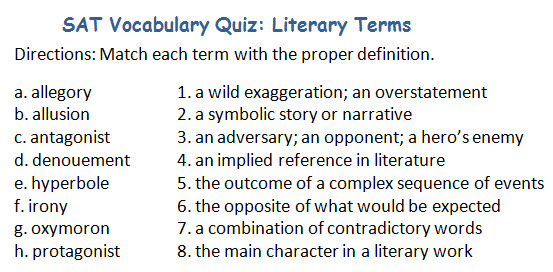Section 3
Transcriber's Notes
3.1 Fundamentals
3.2 Format
3.3 Placement of Transcriber's Notes
3.4 Technical Codes
3.5 Sample
3.1.1
Any wording not shown in the print text and inserted by the transcriber is a transcriber's note. The notes should be as brief as possible, be grammatically correct, and use appropriate grade-level vocabulary. Sentence structure and word choice are dictated by the grade level of the material. Use of full sentences is not necessary in all transcriber's notes.
Modifications to the print text or formatting changes of which the reader should be made aware are explained in a transcriber's note.
3.1.2
Sample transcriber's notes used throughout these guidelines are suggestions which should be modified appropriately for the circumstances and reading level of the book.
3.1.3
Guidelines from other more technical codes, such as Tactile Graphics, may have specialized requirements.
3.1.4
Transcriber's notes consisting of seven words or fewer are embedded in the text. Longer notes use 7-5 margins. Embedded transcriber's notes may be used in multiple formatting situations, e.g., as headings or in keys, usually with tables or columns (See Formats, §11, Tables and Related Columns). Refer to specific sections in these guidelines for the proper way to format transcriber's notes for other situations, e.g., headings, lists, tables, poetry, etc. (See Formats, §2.6, Transcriber's Notes Page.)
3.1.5
A Braille Reader's Perspective. Transcriber's notes provide information to the reader that is not readily apparent by reading the text alone. Use common sense when deciding what is needed in the transcriber's note, and use the same vocabulary level as the text to maintain the reading level of the text.
3.2.1
As a general rule, description of the print format is not required and explanation of the braille format is as brief and concise as possible. The transcriber's note should be positive and state what the format is, rather than what it is not.
a. Unspaced transcriber's note indicators begin (`.<) and end (`.>) a transcriber's note, regardless of the number of paragraphs or items it may contain.
b. A transcriber's note encompasses all information inserted by the transcriber. This note may contain multiple notes and paragraphs before it is closed.
c. Do not insert blank lines before or after a transcriber's note unless required by other formats, e.g., headings, lists, poetry, etc.
d. Page references in transcriber's notes reference print page numbers, e.g., page a37. Items on transcriber-generated and front matter braille pages are identified by the braille page number, e.g., page t3.
3.2.2
Transcriber's Notes. A standard transcriber's note uses 7-5 margins and provides information to the reader before the affected text.
Example 3-1: Standard Transcriber's Note
 ⠀⠀⠀⠀⠀⠀`.<,! symbol .="8 repres5ts
⠀⠀⠀⠀⠀⠀`.<,! symbol .="8 repres5ts
⠀⠀⠀⠀multiplica;n4`.>
,i h tr\ble ) multiplica;n tables1
especially ! #i "8's43.2.3
Embedded Transcriber's Notes. An embedded transcriber's note is seven words or fewer and may be shown within the text, either before or after the text, or standing alone, e.g., used as a heading.
Example 3-2: Embedded Transcriber's Note
 ,electrical 5]gy ;|o `.<"r >r[`.> li<t &
,electrical 5]gy ;|o `.<"r >r[`.> li<t &
⠀⠀h1t
3.3.1
Symbols widely scattered throughout the text are explained at the point of use. Symbols used more often, or in closer context, are listed on the Special Symbols page or in a transcriber's note at the point of use.
3.3.2
Use 1-3 margins for identifications of two or more abbreviations or symbols, preceded and followed by a blank line. The closing transcriber's note indicator follows the last item.
Example 3-3: Transcriber's Note with List of Special Symbols
 ⠀⠀,? li/ %[s "s ways ^ws c 2 relat$4
⠀⠀,? li/ %[s "s ways ^ws c 2 relat$4
⠀⠀⠀⠀⠀⠀`.<,analogy symbols us$3
⠀⠀⠀⠀⠀⠀⠀⠀⠀⠀⠀⠀⠀⠀⠀⠀⠀⠀⠀⠀⠀⠀⠀⠀⠀⠀⠀⠀⠀⠀⠀⠀⠀⠀⠀⠀⠀⠀⠀⠀
.=3 is to
.=33 z`.>⠀⠀⠀⠀⠀⠀⠀⠀⠀⠀⠀⠀⠀⠀⠀⠀⠀⠀⠀⠀⠀⠀⠀⠀⠀⠀⠀⠀⠀⠀⠀
⠀⠀⠀⠀⠀⠀⠀⠀⠀⠀⠀⠀⠀⠀⠀⠀⠀⠀⠀⠀⠀⠀⠀⠀⠀⠀⠀⠀⠀⠀⠀⠀⠀⠀⠀⠀⠀⠀⠀⠀
hide 3 3c1l 33 close 3 %ut
r\< 3 smoo? 33 p]si/ 3 quit
page 3 book 33 tree 3 =e/
3.3.3
Continuity. Whenever narrative text is interrupted by a
full print page or more of material (e.g., charts, graphs, boxed, or columned information), insert a transcriber's note at the end of the narrative text, before the print page change indicator. Insert the continuation transcriber's note before the narrative text continues (frequently on a new print page after the page change indicator). Samples:
Text continues on page 834.
Text continued from page b832.
Example 3-4: Continuation Transcriber's Note
 ,?ird ,plebeian4 ,let hm 2 ,caes>4
,?ird ,plebeian4 ,let hm 2 ,caes>4
⠀⠀⠀⠀⠀⠀⠀⠀⠀⠀⠀⠀⠀⠀⠀⠀⠀⠀⠀⠀⠀⠀⠀⠀⠀⠀⠀⠀⠀⠀⠀⠀⠀⠀⠀⠀⠀⠀⠀⠀
⠀⠀⠀⠀⠀⠀`.<,text 3t9ues on page #hcd4`.>
------------------------------------#hcc
⠀⠀⠀⠀⠀⠀⠀⠀⠀⠀⠀⠀⠀⠀⠀⠀⠀⠀⠀⠀⠀⠀⠀⠀⠀⠀⠀⠀⠀⠀⠀⠀⠀⠀⠀⠀⠀⠀⠀⠀
⠀⠀⠀⠀⠀⠀⠀⠀,,,lit]ature & gov]n;t,'
⠀⠀⠀⠀⠀⠀⠀⠀⠀⠀⠀⠀,rule by ! ,ri*
⠀⠀⠀⠀⠀⠀⠀⠀⠀⠀⠀⠀⠀⠀⠀⠀⠀⠀⠀⠀⠀⠀⠀⠀⠀⠀⠀⠀⠀⠀⠀⠀⠀⠀⠀⠀⠀⠀⠀⠀
⠀⠀,roman politics (t5 resembl$ a 444
⠀⠀444
------------------------------------#hcd
⠀⠀⠀⠀⠀⠀`.<,text 3t9u$ f page b#hcb4`.>
3.4.1
Include a comment on the Transcriber's Notes page when Nemeth Code, Tactile Graphics, or other technical notation is used in the transcription. Samples:
Mathematical content is transcribed according to The Nemeth Braille Code for Mathematics and Science Notation, 1972 Revision, 2007–2016 including updates and the Guidance for Transcription Using the Nemeth Code within UEB Context.
Tactile graphics are produced according to the Guidelines and Standards for Tactile Graphics, 2010.
3.4.2
List the technical symbols on the Special Symbols page.
Sample 3-1: Headings Added to Matching Exercise
 1 ⠀⠀⠀⠀⠀⠀⠀⠀,,sat ,vocabul>y ,quiz3
1 ⠀⠀⠀⠀⠀⠀⠀⠀,,sat ,vocabul>y ,quiz3
2 ⠀⠀⠀⠀⠀⠀⠀⠀⠀⠀⠀⠀⠀,lit]>y ,t]ms
3 ⠀⠀⠀⠀⠀⠀⠀⠀⠀⠀⠀⠀⠀⠀⠀⠀⠀⠀⠀⠀⠀⠀⠀⠀⠀⠀⠀⠀⠀⠀⠀⠀⠀⠀⠀⠀⠀⠀⠀⠀
4 ⠀⠀⠀⠀,direc;ns3 ,mat* ea* t]m ) ! prop]
5 ⠀⠀⠀⠀def9i;n4
6 ⠀⠀⠀⠀⠀⠀⠀⠀⠀⠀⠀⠀⠀⠀⠀⠀⠀⠀⠀⠀⠀⠀⠀⠀⠀⠀⠀⠀⠀⠀⠀⠀⠀⠀⠀⠀⠀⠀⠀⠀
7 ⠀⠀⠀⠀`.<,t]m`.>
8 a4 allegory
9 ;b4 allu.n
10 ;c4 antagoni/
11 444
12 ;h4 protagoni/
13 ⠀⠀⠀⠀⠀⠀⠀⠀⠀⠀⠀⠀⠀⠀⠀⠀⠀⠀⠀⠀⠀⠀⠀⠀⠀⠀⠀⠀⠀⠀⠀⠀⠀⠀⠀⠀⠀⠀⠀⠀
14 ⠀⠀⠀⠀`.<,def9i;n`.>
15 #a4 a wild exa7]a;n2 an ov]/ate;t
16 #b4 a symbolic /ory or n>rative
17 #c4 an adv]s>y2 an oppon5t2 a h]o's 5emy
18 444
19 #h4 ! ma9 "* 9 a lit]>y "w


